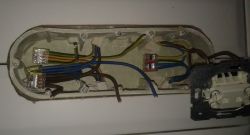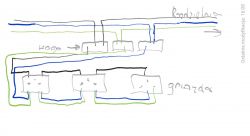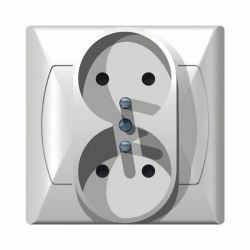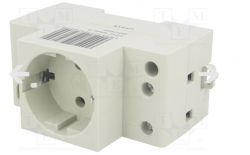Hello, I am not an electrician, but a person who undergoes a general renovation, including electrics - boxless installation. The installers laid the entire installation and will take measurements, but I noticed that each of them connects the sockets differently (mainly 2-4 sockets in a long box), can you help me verify that everything is ok?
However, before I posted the topic, I searched a bit on the Internet and rather everyone commented on the correct way, i.e. each of the three wagos connects two through cables (L/N/PE) and we also branch the wires to the sockets from each wago, i.e. if there are three sockets, then the wago should have 5 "ports" (this is what one electrician from the left in photo 1 did), the other one did differently, claiming that it was a pass-through socket (photo 2, a much older electrician and what seems to me to be a bad connection, but referred to the attached instructions on the socket (photo #3). I tried to find such a connection on the Internet, but I couldn't find it. As for photo No. 3, looking at the electrode forum and what I read, I would do the wago connector and only from the wago connector would I go to the sockets and connect them only as in photo No. 2, not directly / through. Am I wrong?
and what seems to me to be a bad connection, but referred to the attached instructions on the socket (photo #3). I tried to find such a connection on the Internet, but I couldn't find it. As for photo No. 3, looking at the electrode forum and what I read, I would do the wago connector and only from the wago connector would I go to the sockets and connect them only as in photo No. 2, not directly / through. Am I wrong?
I am asking for help, because if they also measure, they can mask their mistakes, and I have no basis or knowledge to undermine someone else's work. I'm just afraid of problems when using this installation in the future.
Thank you very much in advance
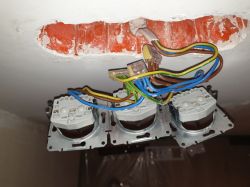
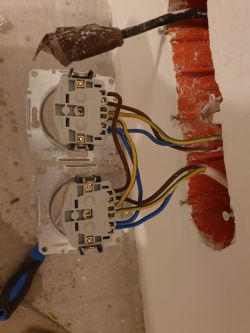
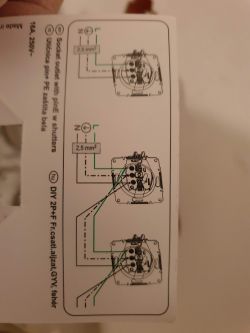
However, before I posted the topic, I searched a bit on the Internet and rather everyone commented on the correct way, i.e. each of the three wagos connects two through cables (L/N/PE) and we also branch the wires to the sockets from each wago, i.e. if there are three sockets, then the wago should have 5 "ports" (this is what one electrician from the left in photo 1 did), the other one did differently, claiming that it was a pass-through socket (photo 2, a much older electrician
I am asking for help, because if they also measure, they can mask their mistakes, and I have no basis or knowledge to undermine someone else's work. I'm just afraid of problems when using this installation in the future.
Thank you very much in advance






